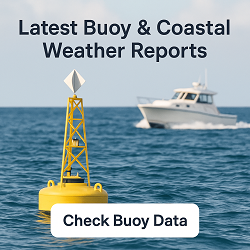Barnesville, GA Weather Forecast and Current Conditions (30204)
Current Conditions From Nearby Station

Feels Like 72°F
at
Current Conditions From Nearby Station

Feels Like 72°F
at
Point Forecast at a Glance







This Date in Weather History
1983 - Heavy rains began in central and eastern Arizona which culminated in the worst flood in the history of the state. Eight to ten inch rains across the area caused severe flooding in southeastern Arizona which resulted in thirteen deaths and 178 million dollars damage. President Reagan declared eight counties of Arizona to be disaster areas.
More on this and other weather history
Barnesville 7 Day Weather Forecast Details
Monday Sep 29

Day: Mostly cloudy, with a high near 80. Northeast wind around 10 mph, with gusts as high as 20 mph.

Night: Mostly cloudy, with a low around 65. Northeast wind 5 to 10 mph, with gusts as high as 20 mph.
Tuesday Sep 30

Day: Mostly cloudy, with a high near 80. Northeast wind 5 to 10 mph.

Night: Mostly cloudy, with a low around 61. Northeast wind 5 to 10 mph.
Wednesday Oct 1

Day: Mostly sunny, with a high near 82. Northeast wind 5 to 10 mph.

Night: Clear, with a low around 60.
Thursday Oct 2

Day: Sunny, with a high near 77.

Night: Mostly clear, with a low around 55.
Friday Oct 3

Day: Sunny, with a high near 78.

Night: Partly cloudy, with a low around 57.
Saturday Oct 4

Day: Mostly sunny, with a high near 78.

Night: Partly cloudy, with a low around 61.
Sunday Oct 5

Day: Mostly sunny, with a high near 78.

Night: Partly cloudy, with a low around 63.
Sun & Moon Monthly
Sunrise 7:30 AM
Sunset 7:25 PM
Last Light 7:50 PM
Moonset ------

Contiguous United States Extremes
Sun's High Temperature
99 at Rio Grande Village, TX
Mon's Low Temperature
23 at 32 Miles West-southwest Of Bynum, MT
Weather Folklore
The pitcher plant opens wider before a rain.
Current subscribers - login to your ClearSky account
About Barnesville, Georgia
Barnesville is a city in Lamar County, Georgia, United States. As of the 2010 census, the city had a population of 6,755, up from 5,972 at the 2000 census. The city is the county seat of Lamar County and is just outside of the Atlanta metropolitan area.
Barnesville is located 37 miles (60 km) northwest of Macon and 60 miles (97 km) south of Atlanta. It was called the "Buggy Capital of the South", as the town produced about 9,000 buggies a year around the turn of the 20th century. Each year in the third week of September the town hosts an annual Buggy Days celebration.
Content from Wikipedia, licensed under CC BY-SA 3.0.
How We Provide Better Local Weather
Current conditions: We use the nearest available station to your location - including professional MESONET/MADIS and local weather stations - often miles closer than regional airports.
Forecasts: National Weather Service point forecasts predict for your specific area, not broad regional zones, making them far more relevant to your location.

